Part 1. Overview of Metamorphism and Tectonics
Part 2. Introduction to Metamorphism
Part 3. Physical Processes of Metamorphism
Part 4. Introductory Phase Equilibria and Thermodynamics
Part 5. Ultramafic Rocks
Part 6. Mafic Rocks
Part 7. Pelitic Rocks
Part 8. Diffusion
Part 9. Thermobarometry
Part 10. Kinetics
Part 11. Interaction Between Metamorphism and Deformation
Part 12. Metamorphism and Geochronology
Part 13. Metamorphism and Tectonics I
Part 14. Metamorphism and Tectonics II
Thermodynamics Notes
Part 5. Ultramafic Rocks
Read Chapter 29.2 of Igneous and Metamorphic Petrology by John Winter
or Chapter 18 of Igneous and Metamorphic Petrology by Philpotts
The three-component system CMS (Ca-Mg-Si): Ultramafic Rocks
The upper mantle is composed of ultramafic rocks (peridotites), different proportions of olivine (forsterite to fayalite) + orthopyroxene (enstatite to ferrosilite) + clinopyroxene (diopside to hedenbergite). Enriched upper mantle is lherzolite: olivine + opx + cpx. Extraction of basalt via melting leads to loss of the cpx and the production of an olivine + opx residuum called harzburgite. Metamorphism of harzburgites can conveniently be modeled using Mg-Si-O-H. Modeling of meta-lherzolites requires the addition of Ca, which can be done with three components as CaO-MgO-SiO, assuming excess H2O. Peridotites also contain an aluminous phase, either plagioclase, spinel, or garnet.
In the field, ultramafic rocks are mostly seen in the basal sections of ophiolites and as exhumed pieces of the upper mantle. Here's a famous outcrop at Helgehornvatnet in Norway:
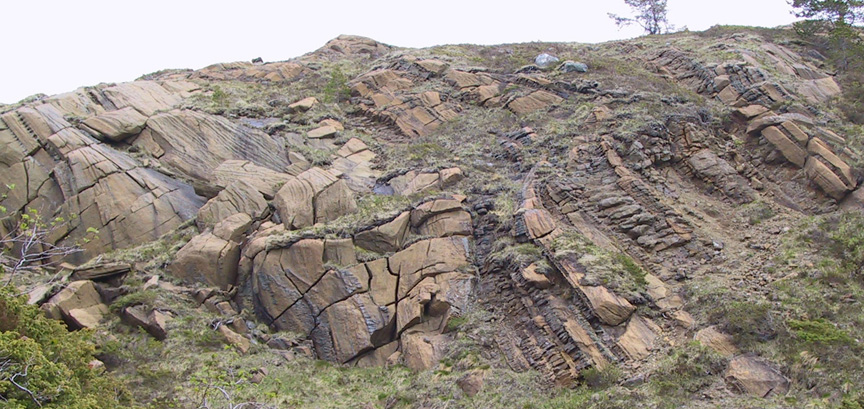
The layering is formed by different proportions of olivine, opx, cpx, and garnet:
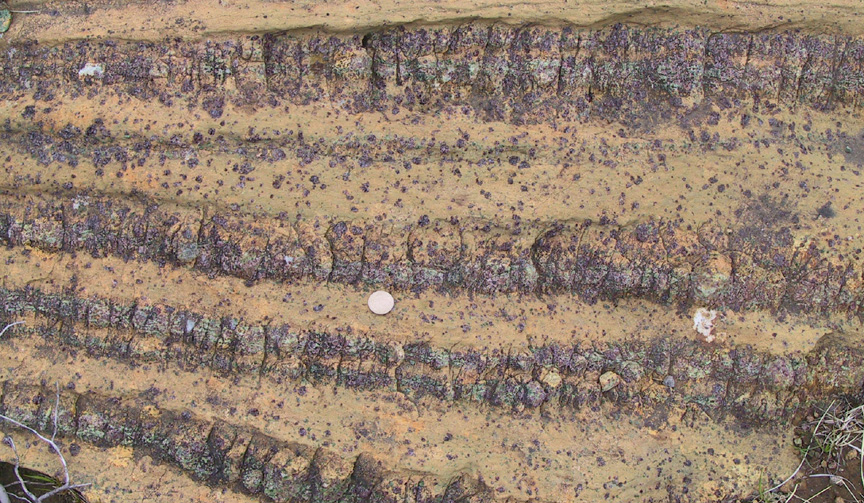
Which you can see nicely in this closeup:
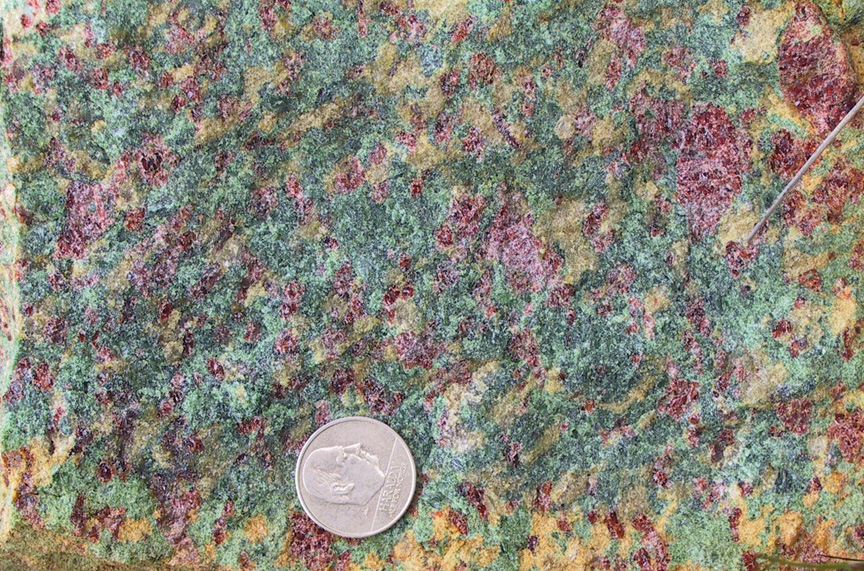
To understand the petrogenesis of ultramafic rocks using the CaO-MgO-SiO system, we plot the phases using molar proportions on a triangle with one component at each apex
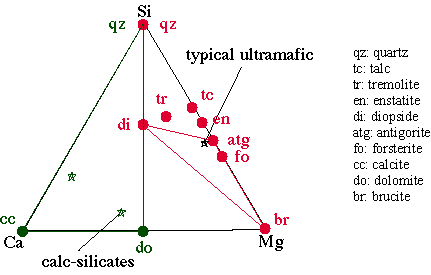
forsterite Mg2SiO4
enstatite MgSiO3
tremolite Ca2Mg5Si8O22(OH)2
forsterite olivine (Mg,Fe)2SiO4)
serpentine (the three polymorphs are chrysotile, lizardite, antigorite) contains (Mg,Fe)SiO(OH)
anthophyllite Mg7Si8O22(OH)2
talc Mg6Si8O20(OH)2
PT Region--Divariant Field
if there are 2 degrees of freedom (P and T), 2 + P=3 + 2, P=3; there are three phases in a divariant field
these three phases define a triangle on the CMS diagram
bulk composition lies within triangle
a different bulk composition defines a different 3-phase triangle at the same P&T
Mineral Reaction--Univariant Line
if there is 1 degree of freedom (P or T), 1 + P=3 + 2, P=4; there are four phases along a univariant line--a reaction
the four phases create crossing tie lines
bulk composition lies within the intersection of the two 3-phase triangles
Invariant Point
if there are 0 degrees of freedom, 0 + P=3 + 2, P=5; there are five phases at an invariant point
Reactions in the CMS(H) system at low pressures--the model system for peridotite
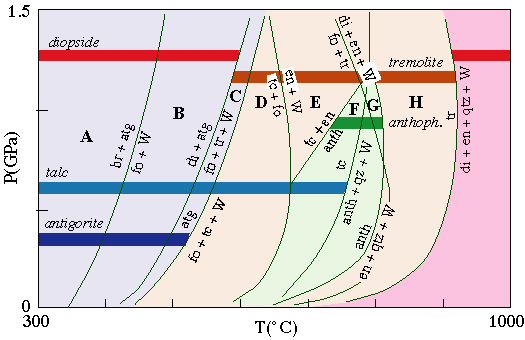
- antigorite is stable to ~400°C, and is equivalent to greenschist-facies conditions
- tremolite appears at conditions close to where antigorite disappears, and indicates amphibolite facies
- talc is stable to much higher temperatures of ~750°C, and breaks down at granulite-facies conditions
- diopside is stable at both low temperatures and high temperatures, separated by an interval in which tremolite is stable instead
- anthophyllite is stable only at amphibolite-facies conditions, and only to pressures of ~1.2 GPa, rendering it the only useful indicator of pressure in this group of minerals
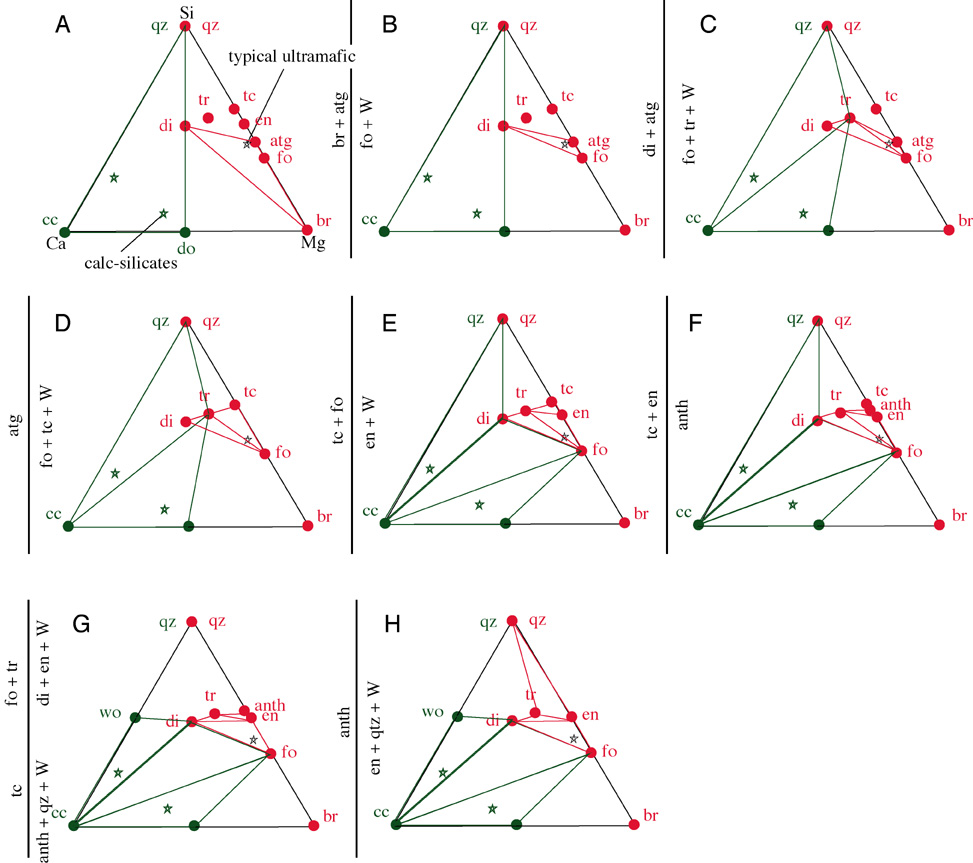
Most ultramafic rocks span a very restricted range of bulk compositions and thus their constituent phases are also very restricted in composition. Because of this, ignoring Fe to calculate the phase relations is not a big simplification. This also means that the compositions of minerals cannot change much within their stability fields, the positions of the reactions do not move around very much with mineral composition, and the reactions are essentially discontinuous reactions.
Below are phase diagrams showing the stability fields of minerals in various bulk compositions of ultramafic rocks:
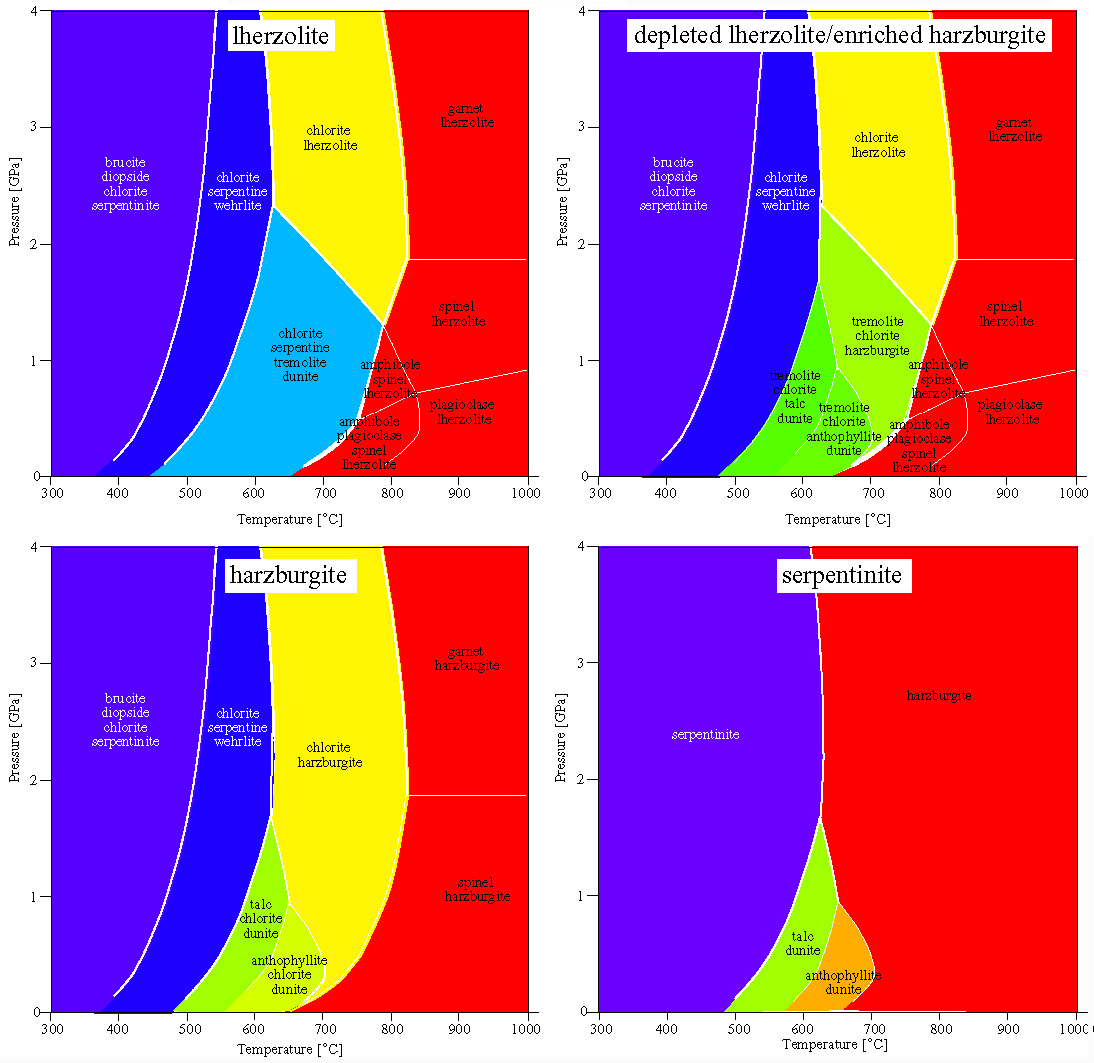
Part 1. Overview of Metamorphism and Tectonics
Part 2. Introduction to Metamorphism
Part 3. Physical Processes of Metamorphism
Part 4. Introductory Phase Equilibria and Thermodynamics
Part 5. Ultramafic Rocks
Part 6. Mafic Rocks
Part 7. Pelitic Rocks
Part 8. Diffusion
Part 9. Thermobarometry
Part 10. Kinetics
Part 11. Interaction Between Metamorphism and Deformation
Part 12. Metamorphism and Geochronology
Part 13. Metamorphism and Tectonics I
Part 14. Metamorphism and Tectonics II
Thermodynamics Notes







